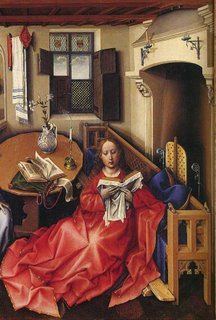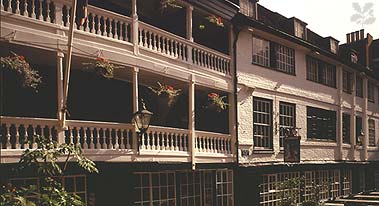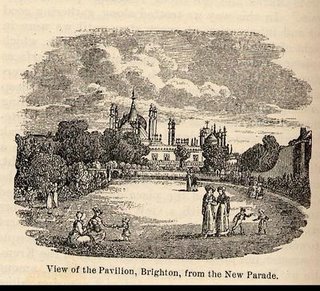
There were four-and-twenty virgins come down from Inverness


There were four-and-twenty virgins come down from Inverness
 I used to finish every book I started. I think it was partly due to a strong desire for closure, but the other thing that motivated me was artistic sympathy. Even if I really didn’t like the beginning of the book, I kept reading, thinking it might get better.
I used to finish every book I started. I think it was partly due to a strong desire for closure, but the other thing that motivated me was artistic sympathy. Even if I really didn’t like the beginning of the book, I kept reading, thinking it might get better.
I still feel that artistic sympathy on opening a new book; I always hope I am going to enjoy it. But things have changed since I became a mother and a writer (just about simultaneously). I have accumulated an enormous TBR list, full of good bets from favorite authors and kindred spirits met at writers’ conferences and the like.
I’ve finally decided that it’s just not worth the time to finish a book I’m not enjoying, when it’s so easy to find something more to my taste. Sometimes I’ll give up after a few chapters, or even a few pages.
Now I feel like I’m striking doom into the hearts of any published or aspiring writers reading this. Because we all want readers to keep going and get to the “good parts”. (Though we try to make them all “good parts”.)
But let me clarify. I’m not really that hard a sell. I do finish and enjoy most books I start.
Things I am NOT picky about:
Where I draw the line:
I do wonder how long other people give a book. Do you always finish? How far do you read before you give up? What makes you give up on a book? What will keep you going even if you’re not quite sold?
Elena
LADY DEARING’S MASQUERADE, an RT Reviewers’ Choice Award nominee
www.elenagreene.com
P.S. The 18th century watch in the picture is available at www.anthonygreen.com.
 Right now, I’m in London. The high-minded (or higher-minded) things I like to do in London include going to the National Gallery (pictured) in Trafalgar Square, and staring at all the Canalettos and Gainsboroughs and Fragonards and Reynoldses and Corots.
Right now, I’m in London. The high-minded (or higher-minded) things I like to do in London include going to the National Gallery (pictured) in Trafalgar Square, and staring at all the Canalettos and Gainsboroughs and Fragonards and Reynoldses and Corots.
 I also love to go up to Hampstead, and see Kenwood House (pictured to the right), with its gorgeous interiors and impressive art collection.
I also love to go up to Hampstead, and see Kenwood House (pictured to the right), with its gorgeous interiors and impressive art collection.
But I like doing less high-minded things too. Like eating. I love having afternoon tea at Fortnum & Mason (on the quiet top floor, not the touristy bottom floor) or Richoux. I tried tea at Harrod’s once, and wasn’t impressed with the service. (Perhaps it was an off day.) I had tea at the Orangery at Kensington Palace, but it was like being in a crowded warehouse with mediocre service. So back I went to Fortnum & Mason, and Richoux.
I also like more simple fare. When Todd and I lived in the East End, we were near two different traditional pie & mash shops — one on Bethnal Green Road in Bethnal Green, and one on Roman Road in Bow. After we discovered them, we ate there a lot. I wasn’t a big fan of their “liquor” — i.e. the green parsley sauce that you can pour over your entire plate — but the pies and mash were scrumptious. Todd even tried the eels, and decided the stewed eels were eatable, but the jellied eels were foul.
 This is the George Inn, which was a major coaching inn during the 18th century. Lovely, isn’t it? I think I’ll actually eat there this time. (I keep talking about food, don’t I? Perhaps I’m hungry. Or perhaps I really visit England for the food!)
This is the George Inn, which was a major coaching inn during the 18th century. Lovely, isn’t it? I think I’ll actually eat there this time. (I keep talking about food, don’t I? Perhaps I’m hungry. Or perhaps I really visit England for the food!)
My favorite part of London is just being there, walking around and looking at all the fantastic buildings. I never get tired of that.
And I never get tired of the theatre either. This time, I’m seeing Titus Andronicus! Then I will be further on my way to my life goal of having seen every one of Shakespeare’s plays performed live on stage. (If I fulfill that goal, and fulfill my goal of never reading Clarissa, I will have truly achieved something.) 🙂
Cara
Cara King, www.caraking.com
MY LADY GAMESTER — read it, it’s good! honest!
I’m composing this by the sea (but posting later), a beautiful sea view out my hotel window at Daytona Beach, Florida where I am attending the Romantic Times Booklover’s Convention. It is a beautiful sunny day with blue skies reflecting in the water, gentle waves breaking into foamy white. The sand is hard packed, perfect for walking or sun-bathing. I love the ocean. I love the smell of it, the rhythmic sound of the waves, the soothing sight of the water, the warmth of sun on my skin.
 In my imagination I’ve spent a great deal of time at another beach resort – Brighton in Sussex. The book I’m working on now, untitled as yet, takes place at Brighton, the seaside town the Prince of Wales, aka “Prinny” made fashionable and where he built his exotic Pavilion. In my book I am in Brighton of 1816 and it is cold.
In my imagination I’ve spent a great deal of time at another beach resort – Brighton in Sussex. The book I’m working on now, untitled as yet, takes place at Brighton, the seaside town the Prince of Wales, aka “Prinny” made fashionable and where he built his exotic Pavilion. In my book I am in Brighton of 1816 and it is cold.
1816 was “the year without a summer” with June snowstorms in the Colonies and rain and chill in the British Isles and Europe. It is thought that the year without a summer was caused by the April 1815 volcanic eruptions of Mount Tambora half a world away on the island of Sumbawa in Indonesia. Mary Shelly wrote Frankenstein that “wet, ungenial summer” of 1816, because she, Percy Byssh Shelly and Lord Byron were housebound and bored in Lake Geneva.

In 1816 the exotic renovations to the Prince Regent’s Marine Pavilion had not yet been completed, and the Prince Regent was not in attendance (that I could discover), but just as so many of us do today, the fashionable people came to the sea side for summer entertainment. Without sea bathing, my characters have had to pass the time at the Circulating Library, which was less like what we would think of as a library, and more like a Barnes & Noble or Borders, where one could purchase refreshment and gather for conversation. One could also gaze at the newest caricatures that arrived from London or try out the newest sheets of music on the pianoforte. The fashionable people also attended balls, assemblies and card parties at the Old Ship Hotel or the Castle Inn, and a dreadfully boring-sounding Sunday afternoon Promenade.
Unlike the view of people out my window here at Daytona Beach, there is no sea bathing in my book, which tells Blake’s story. Theobald Blackwell, Viscount Blakewell, is one of the Ternion introduced in The Marriage Bargain, the three men who have been friends since childhood. Blake reunites with the daughter of a con artist and sparks fly–passionate ones!
In the real world, I have been meeting with friends–fellow authors, booksellers, and readers–at the Romantic Times Convention. The Marriage Bargain, nominated for the Reviewer’s Choice Award for Best Regency-set Historical, alas, did not win, but I was interviewed about it for Dungeon Majesty, a website doing a documentary on Romance. I looked it up and it seems to also be a very clever Dungeons and Dragons site. Imagine me on a Dungeons and Dragons website!
Cheers!
Diane
This is sort of a continuation on my post about Mary Lamb and mental health care in Regency England. I snooped around online and found some great websites, for anyone who might like to know more.
http://en.wikipedia.org/wiki/Bethlehem-Royal-Hospital (this just gives a little more history on Bedlam, a link to their modern museum, a few pics)
http://www.nwe.ufl.edu/~pcraddoc/places.html (some cool maps)
http://www.iwm.org.uk (The Imperial War Museum website–their building incorporates what is left of the original Bedlam, which I thought was fascinating, though I’ve never visited this museum)
http://www.bedlampk.com (I searched all over the web for a good pic of those statues, and only found one here, of all places, at the Bedlam Asset Management website. It’s a cartoony pic, but you can see sort of what they looked like. Not sure I would let this company manage my assets, though…)
http://bms.brown.edu/HistoryofPsychiatry/bedlam.html (more Bedlam history)
Some Mary Lamb stuff:
http://shakespeare.palomar.edu/lambtales/LAMBTALES.HTM (Tales from Shakespeare)
http://womenshistory.about.com/library/pic/bl_p_mary_lamb.htm (a pic of Mary as an old woman)
And, just because I feel like it, http://www.theorlandobloomfiles.com
Have a great weekend!